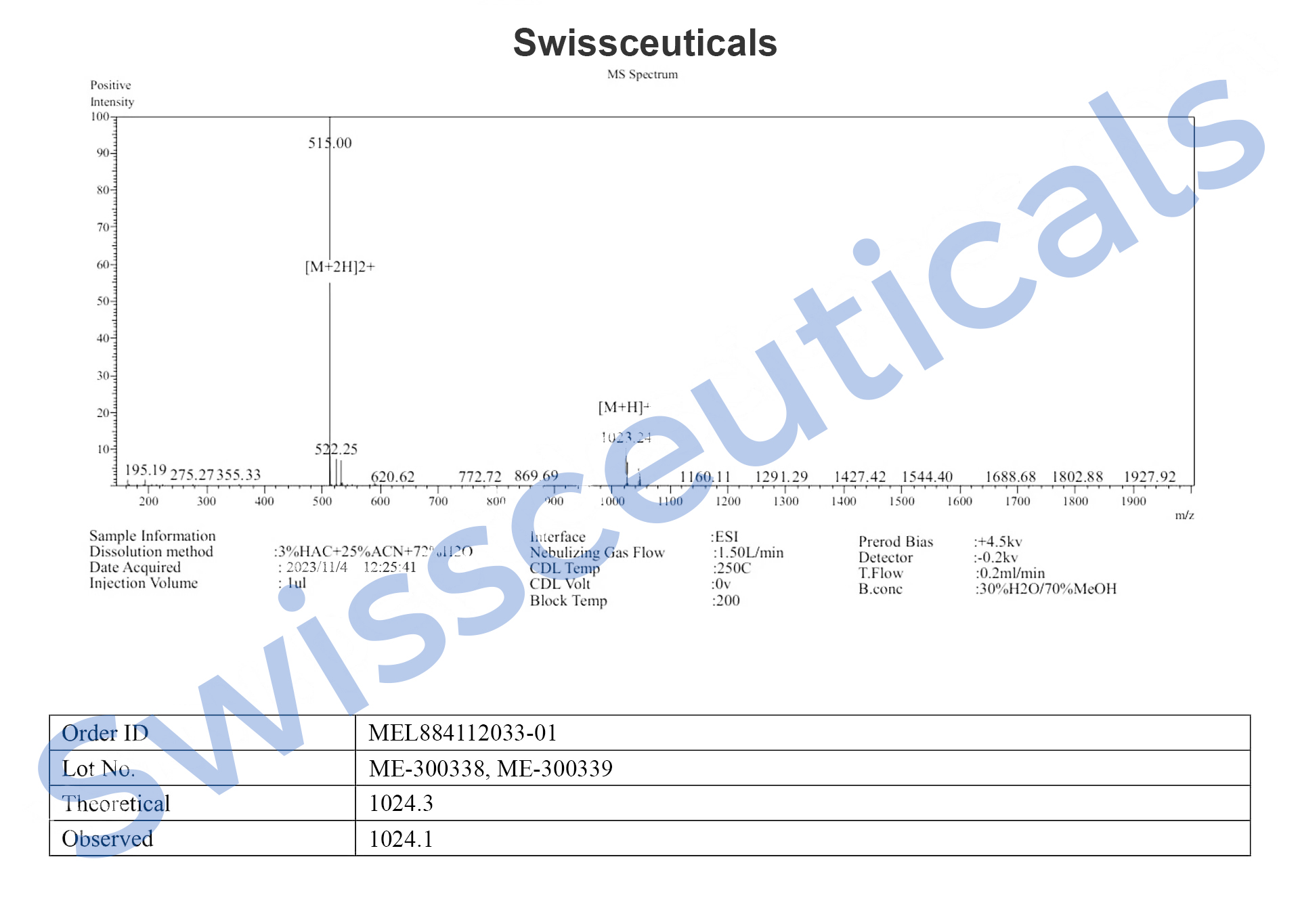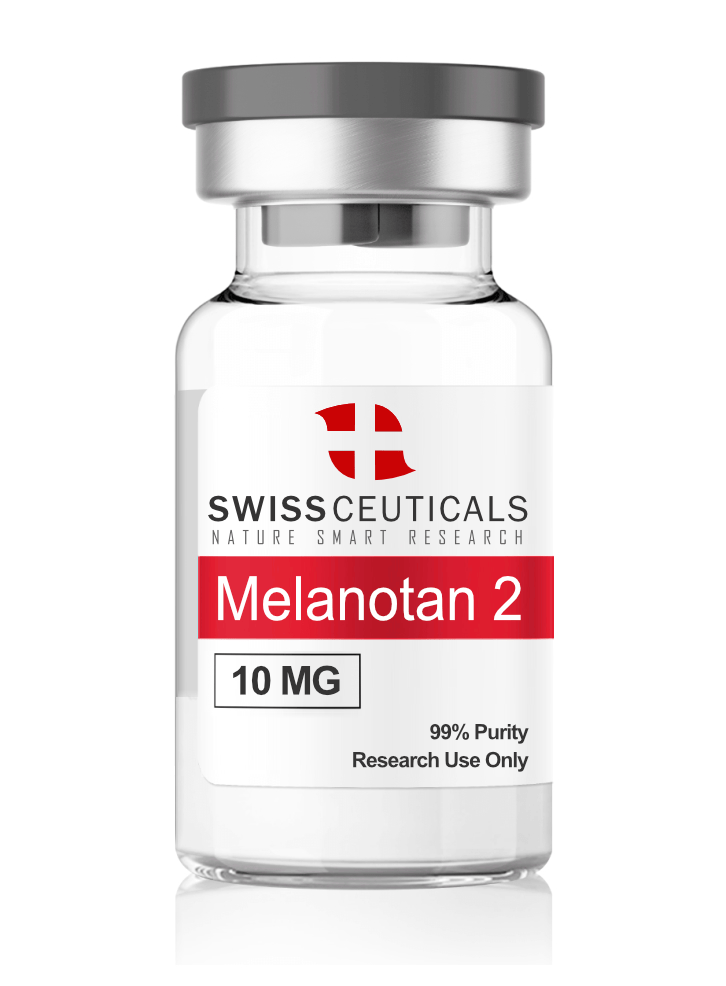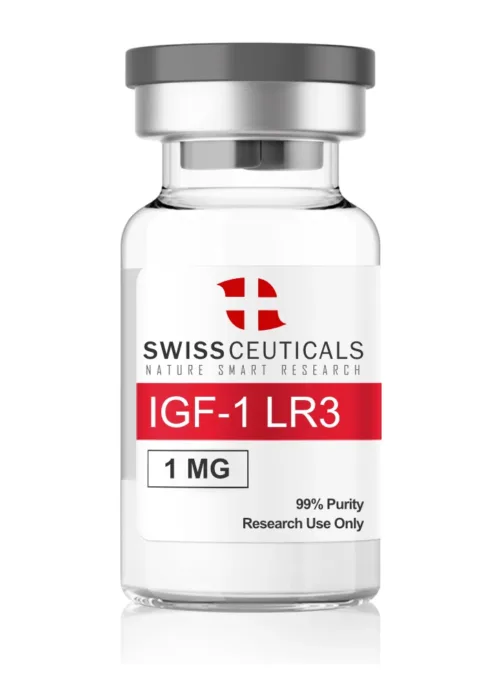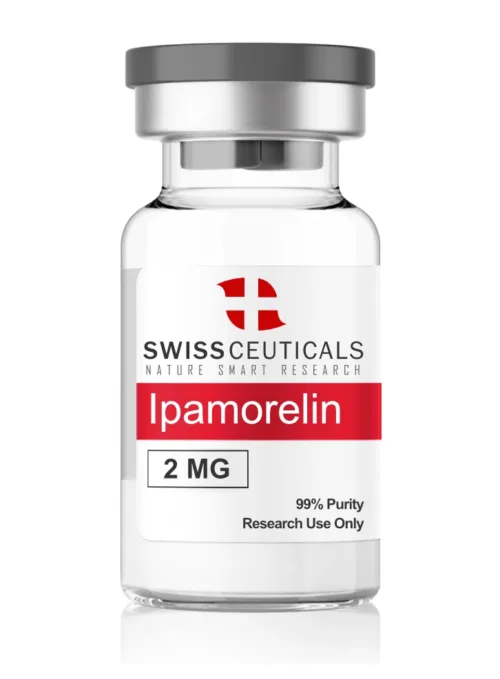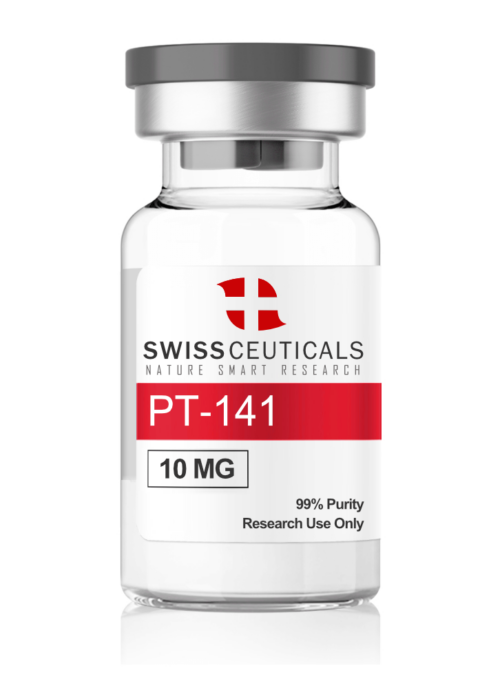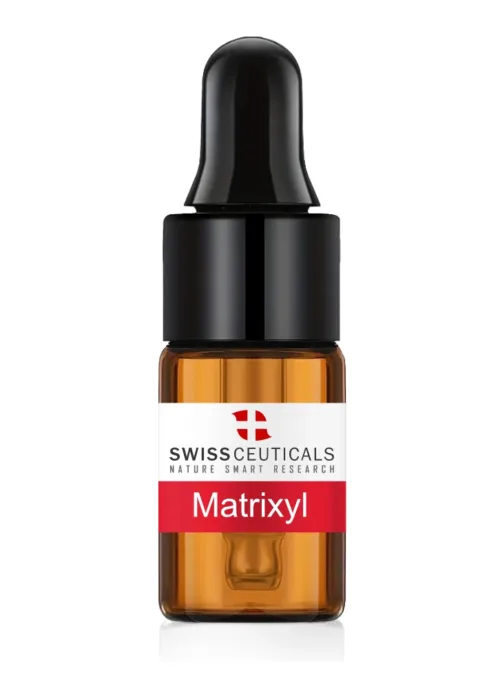Melanotan 2
$50.00
Free Bacteriostatic Water 30ml
with all orders!Free Bacteriostatic Water 30ml
with all orders!
Free Shipping to continental US
for orders over $200Free Shipping to continental US
for orders over $200Melanotan 2 (MT-2) is a synthetic analogue of alpha-melanocyte-stimulating hormone. Developed in the 1980s, Melanotan-2 has been shown to increase sexual arousal, reduce compulsive/addictive behavior, curb hunger and increase melanin production. Research has shown the peptide to stimulate melanocytes therefore producing increased skin pigmentation and may help to combat autism when used during early childhood development.
| Weight | 2 g |
|---|---|
| Dimensions | 5 × 10 × 12 cm |
What Is Melanotan 2?
Melanotan 2 (MT-2) is a synthetic version of human alpha-melanocyte-stimulating hormone (α-MSH). It was originally developed in the 1980s, at the University of Arizona, after it was found that α-MSH caused sexual arousal in rodents as well as darkening of the skin. Originally designed as a sunless tanning option, MT-2 was eventually found to have a wide range of effects such as: in
- increasing sexual arousal,
- promoting tanning or skin pigmentation,
- reducing compulsive behavior,
- controlling addiction,
- fighting hunger,
- reducing glucagon production, and
- reversing features of autism.
Melanotan 2 Peptide Structure
Peptide Sequence: Nle-Asp(1)-His-D-Phe-Arg-Trp-Lys(1)
Molecular Formula: C50H69N15O9
Molecular Weight: 1024.198 g/mol
PubChem CID: 92432
CAS Number: 121062-08-6
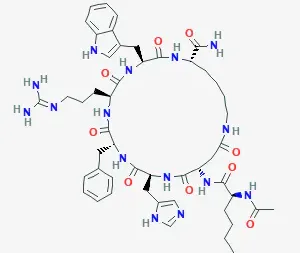
Source: PubChem
Melanotan 2 Research
Melanotan 2 and Melanocortin Signaling
Melanotan 2 produces its effects by binding with melanocortin receptors. There are five known melanocortin receptors, each with different function. MT-2 is known to bind primarily to MC-4R and MC-1R, but also binds weakly to MC-3R.
- MC-1R: Found on melanocytes, stimulation of MC-1R causes darkening of the skin and hair.
- MC-2R: Found in the adrenal glands, MC-2R binding promotes the secretion of adrenal hormones, such as cortisol.
- MC-3R: MC-3R is involved in appetite control and energy regulation, but little else is known about this receptor.
- MC-4R: Stimulation of MC-4R causes changes in feeding and sexual behavior. It also affects male erectile function and energy homeostasis.
- MC-5R: MC-5R is expressed on sweat glands and pancreatic islet cells.
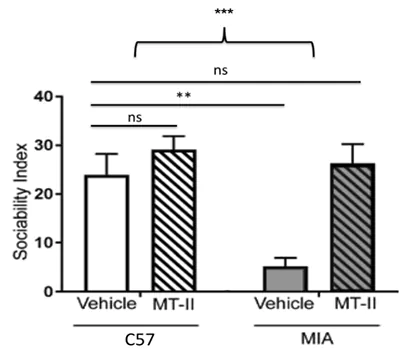
Impact of MT-2 on sociability in rats with ASD (MIA) showing that MT-2 returns sociability ratings to near the baseline of control animals (C57).
Source: PubMed
These findings suggest that MT-2 might not only be an effective treatment in alcohol-related disorders, but that the peptide is tapping into a more fundamental process of craving and desire in the mammalian brain. This research may open up pathways to a deeper understanding not just of alcohol abuse and hunger, but the role of oxytocin in impulsive behavior. It may even help researchers identify craving pathways and advance our understanding of human motivation in aspects of life ranging from work to relationships.
Melanotan 2 and Erectile Dysfunction
Erectile dysfunction (ED) is often attributed to vascular issues and can be effectively treated in a majority of men via sildenafil (Viagra) and other drugs that improve blood flow by reducing vascular resistance. Not all ED is due to vascular issues, however, and so sildenafil and similar drugs are ineffective in a small percentage of men and in the vast majority of women who suffer from hypoactive sexual desire disorder. It has long been known that MT-2 is an effective treatment for ED, but research suggests that it may have more wide-ranging application than drugs like sildenafil due to its actions in the central nervous system. In a study of men who had failed treatment with Viagra, eighty percent responded to MT-2 treatment[10]. MT-2 has been actively investigated in the past as a treatment for both male and female sexual desire disorders.
Future MT-2 Research
MT-2 is a heavily researched peptide, particularly regarding human behavior, sexual desire, and impulse control. The peptide, in various forms, has been investigated in clinical trials, though problems with routes of administration have forced scientists back to the drawing board. There is active and ongoing research into the benefits of this particular peptide.
MT-2 exhibits minimal to moderate side effects, low oral and excellent subcutaneous bioavailability in mice. Per kg dosage in mice does not scale to humans. MT-2 for sale at Peptide Sciences is limited to educational and scientific research only, not for human consumption. Only buy MT-2 if you are a licensed researcher.
Article Author
The above literature was researched, edited and organized by Dr. Logan, M.D. Dr. Logan holds a doctorate degree from Case Western Reserve University School of Medicine and a B.S. in molecular biology.
Scientific Journal Author
Dr. Wessells is a UW professor, chair of the Department of Urology, and has served on several national and international professional and government committees, including the WHO International Consultations on Erectile and Sexual Dsyfunction, an NIDDK working group on urological complications of diabetes, and a NIH symposium on diabetes. He is a surgeon, researcher and expert on urogenital trauma and erectile dysfunction. His clinical interests include reconstructive surgery of the genitourinary tract, acute injury management and complex surgery for male sexual dysfunction. His research interests are in urogenital trauma epidemiology and management; the physiology and pathophysiology of erectile dysfunction; reconstructive surgery; crash injury mechanics; and urological complications of diabetes. A proerectile melanocortin agonist developed by Dr. Wessells and his collaborators at the University of Arizona is in clinical trials for the treatment of erectile dysfunction.
Dr. Wessells is being referenced as one of the leading scientists involved in the research and development of Melanotan 2. In no way is this doctor/scientist endorsing or advocating the purchase, sale, or use of this product for any reason. There is no affiliation or relationship, implied or otherwise, between Peptide Sciences and this doctor. The purpose of citing the doctor is to acknowledge, recognize, and credit the exhaustive research and development efforts conducted by the scientists studying this peptide. Dr. Wessells is listed in [11] and [12] under the referenced citations.
Referenced Citations
- E. Minakova et al., “Melanotan-II reverses autistic features in a maternal immune activation mouse model of autism,” PLoS ONE, vol. 14, no. 1, Jan. 2019.
- A. van der Klaauw et al., “Role of melanocortin signalling in the preference for dietary macronutrients in human beings,” Lancet Lond. Engl., vol. 385 Suppl 1, p. S12, Feb. 2015.
- H. Shimizu, K. Inoue, and M. Mori, “The leptin-dependent and -independent melanocortin signaling system: regulation of feeding and energy expenditure,” J. Endocrinol., vol. 193, no. 1, pp. 1–9, Apr. 2007.
- C. Bjørbaek and A. N. Hollenberg, “Leptin and melanocortin signaling in the hypothalamus,” Vitam. Horm., vol. 65, pp. 281–311, 2002.
- F. Guo, K. Bakal, Y. Minokoshi, and A. N. Hollenberg, “Leptin Signaling Targets the Thyrotropin-Releasing Hormone Gene Promoter in Vivo,” Endocrinology, vol. 145, no. 5, pp. 2221–2227, May 2004.
- Y. H. Lee, M.-Y. Wang, X.-X. Yu, and R. H. Unger, “Glucagon is the key factor in the development of diabetes,” Diabetologia, vol. 59, no. 7, pp. 1372–1375, 2016.
- C. Toda et al., “Distinct effects of leptin and a melanocortin receptor agonist injected into medial hypothalamic nuclei on glucose uptake in peripheral tissues,” Diabetes, vol. 58, no. 12, pp. 2757–2765, Dec. 2009.
- D. A. York, S. Boghossian, and M. Park-York, “Melanocortin activity in the amygdala influences alcohol intake,” Pharmacol. Biochem. Behav., vol. 98, no. 1, pp. 112–119, Mar. 2011.
- M. Navarro, F. Carvajal, J. M. Lerma-Cabrera, I. Cubero, M. J. Picker, and T. E. Thiele, “Evidence that Melanocortin Receptor Agonist Melanotan-II Synergistically Augments the Ability of Naltrexone to Blunt Binge-Like Ethanol Intake in Male C57BL/6J Mice,” Alcohol. Clin. Exp. Res., vol. 39, no. 8, pp. 1425–1433, Aug. 2015.
- “Synthetic melanotropic peptide initiates erections in men with psychogenic erectile dysfunction: double-blind, placebo controlled crossover study. – PubMed – NCBI.” [Online]. Available: [Accessed: 15-May-2019]..
- WESSELLS, H. , HRUBY, V. J., HACKETT, J. , HAN, G. , BALSE‐SRINIVASAN, P. and VANDERAH, T. W. (2003), MT‐II Induces Penile Erection via Brain and Spinal Mechanisms. Annals of the New York Academy of Sciences, 994: 90-95.
- Wessells, H. (1998). Synthetic melanotropic peptide initiates erections in men with psychogenic erectile dysfunction: Doubleblind placebo controlled crossover study. Nature.com. Available at:
- M. T. Islam et al., “Vasopressin neurons in the paraventricular hypothalamus promote wakefulness via lateral hypothalamic orexin neurons,” Curr. Biol. CB, pp. S0960-9822(22)01121–6, Jul. 2022, doi: 10.1016/j.cub.2022.07.020.
- J. K. Y. Lau et al., “Melanocortin receptor activation alleviates amyloid pathology and glial reactivity in an Alzheimer’s disease transgenic mouse model,” Sci. Rep., vol. 11, no. 1, p. 4359, Feb. 2021, doi: 10.1038/s41598-021-83932-4.
ALL ARTICLES AND PRODUCT INFORMATION PROVIDED ON THIS WEBSITE ARE FOR INFORMATONAL AND EDUCATIONAL PURPOSES ONLY.
The products offered on this website are furnished for in-vitro studies only. In-vitro studies (Latin: in glass) are performed outside of the body. These products are not medicines or drugs and have not been approved by the FDA to prevent, treat or cure any medical condition, ailment or disease. Bodily introduction of any kind into humans or animals is strictly forbidden by law.
Certificate of Analysis (COA)
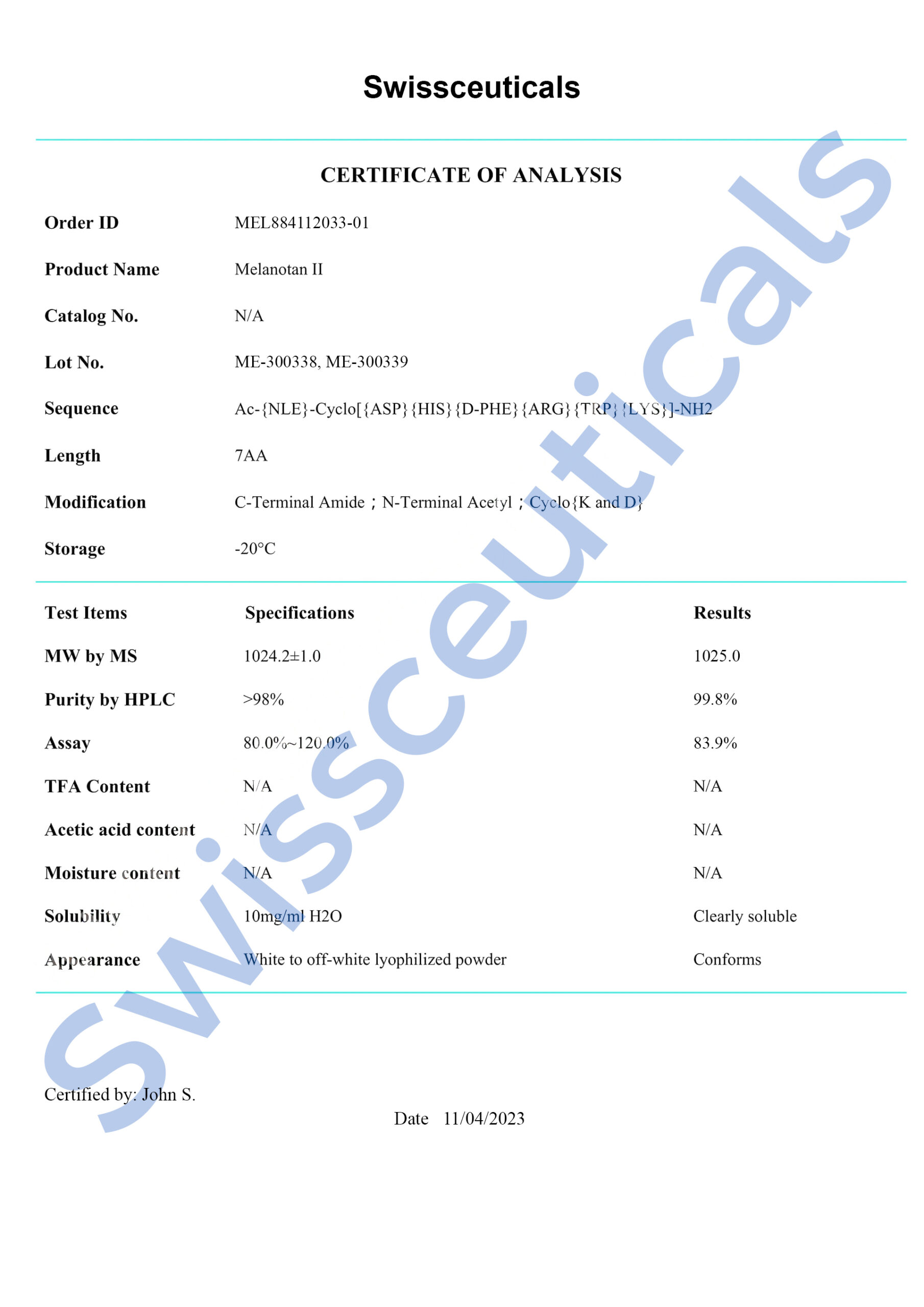
High Performance Liquid Chromatography (HPLC)
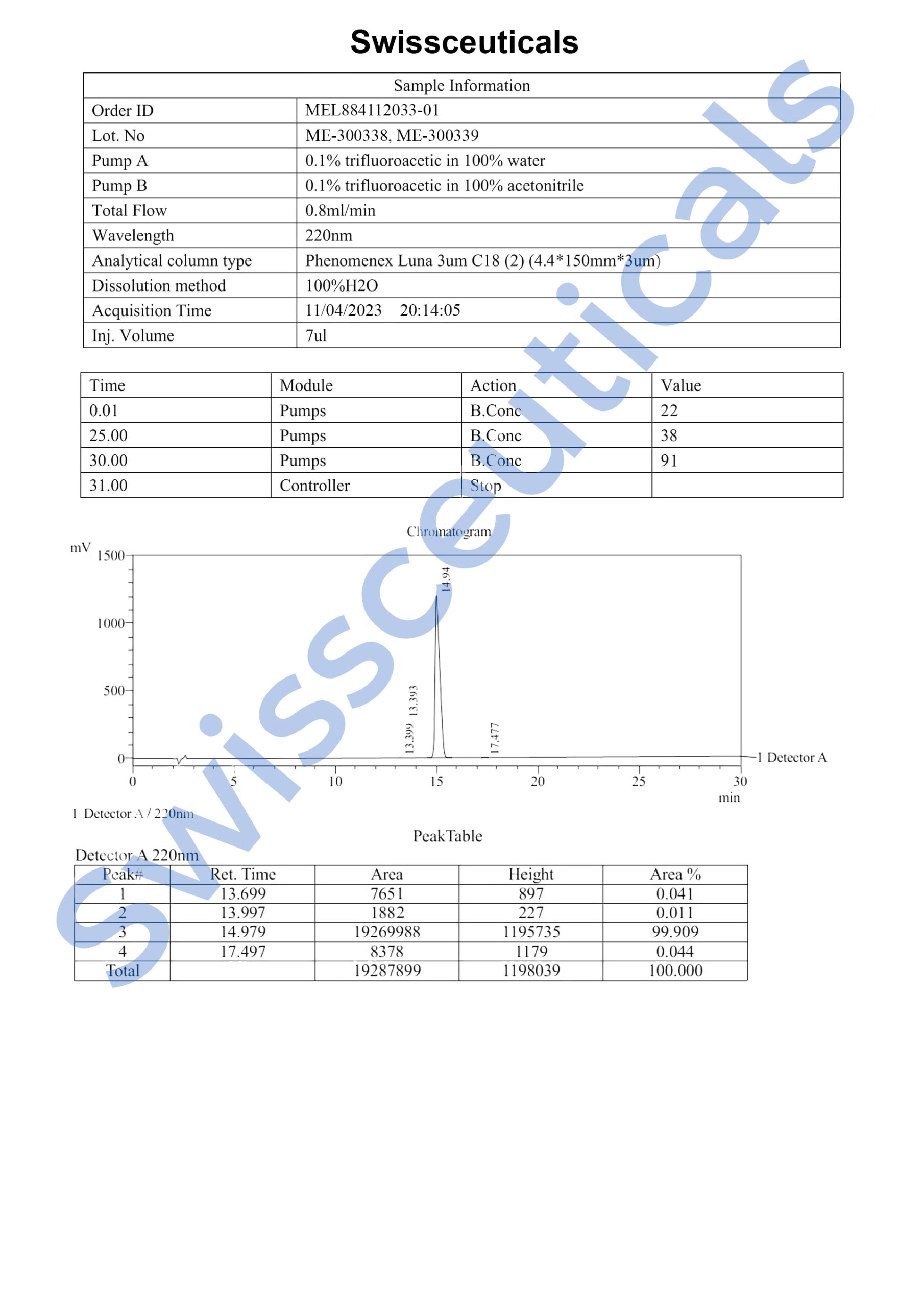
Mass Spectrometry (MS)
